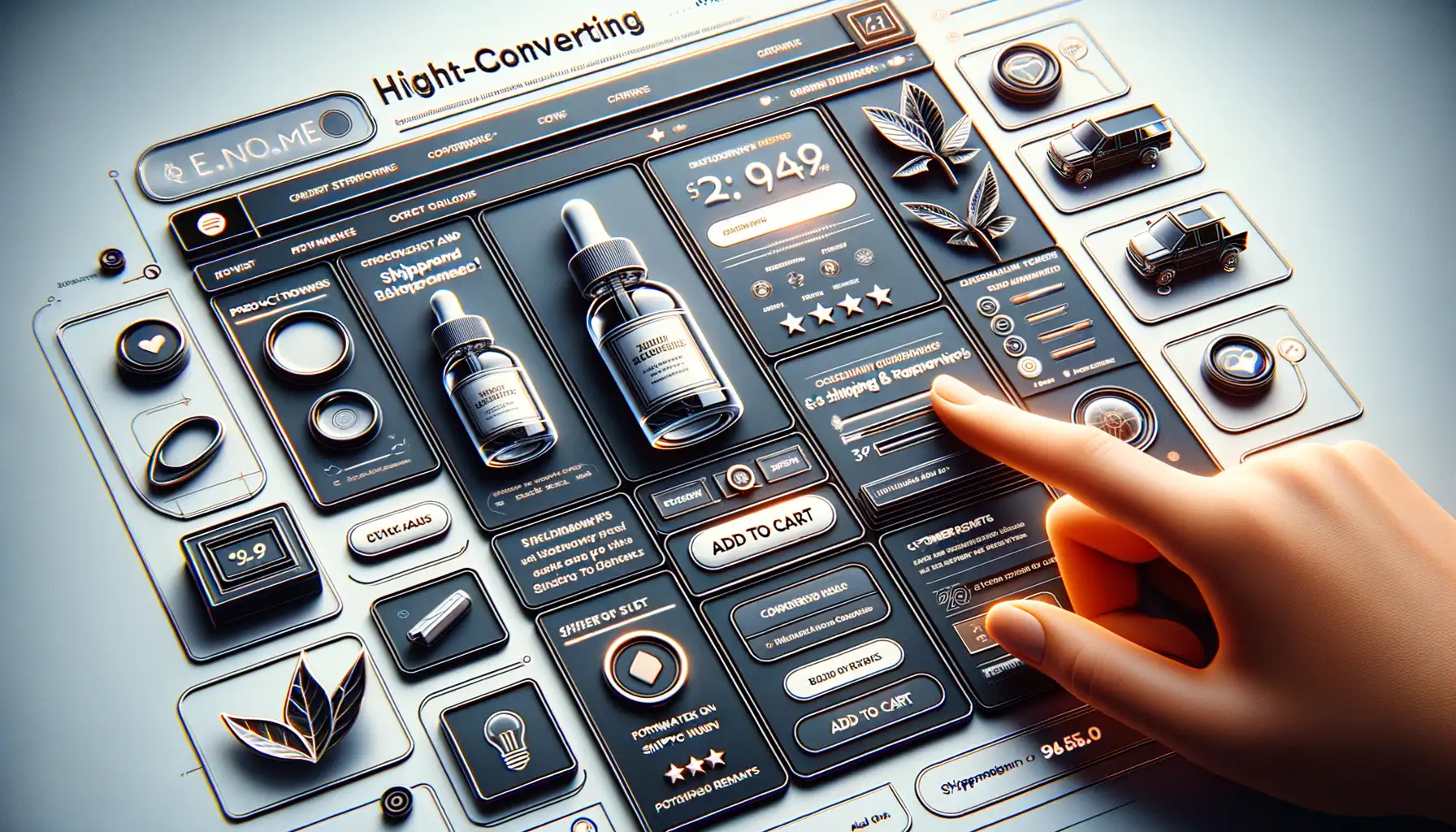Understanding the Importance of Product Page Optimization
Why Your Product Pages Deserve Extra Love
Your product page isn’t just a webpage—it’s the heart and soul of your online store. It’s where curiosity meets commitment, where browsers become buyers. Imagine walking into a brick-and-mortar store, only to find dim lighting, confusing signs, and no one to answer your questions. You’d leave, right? That’s exactly what happens when a product page is neglected.
Here’s the truth: a lackluster product page doesn’t just lose sales; it damages trust. Shoppers are savvier than ever, and they demand more than sterile descriptions and dull photos. They want an experience. Think about it—how often do *you* hit “buy” without feeling inspired or assured?
Don’t let your pages be background noise in the symphony of e-commerce! With the right tweaks, they can sing a melody that converts clicks into loyal customers.
Key Elements of a High-Converting Product Page

Showcase the Value with Crystal Clarity
Imagine you’re shopping online, hovering your mouse over a product that feels like “the one,” but something holds you back. More often than not, it’s because something vital is missing—a clear, irresistible value proposition! A high-converting product page lays out **exactly** why the product deserves its place in your life.
Key elements? Here’s the cheat sheet:
- Compelling Headlines: Your product’s “headline” is like its handshake—make it firm, memorable, and to the point.
- Crystal-clear benefits: Don’t drown them in specs. Show them how buying this solves a problem or fulfills a desire.
- Persuasive call-to-action (CTA): Plain “Buy Now” buttons are boring. How about “Transform Your Space Today”? Even that subtle creativity nudges conversions.
Every Detail, Designed to Win Trust
High-converting pages don’t just inform; they build trust at every turn. Reviews and testimonials? Think of them as digital word-of-mouth—they can make or break confidence. Add to that elements like *high-quality images* (hello, zoom-in feature!) and *precise delivery details*, and suddenly users feel like they know your brand. The devil is truly in the details, and so is the sale.
Techniques to Optimize Product Page Content

Crafting Compelling Descriptions That Speak to Your Customers
Imagine you’re standing in a store, holding a product in your hands. What do you want to know? Does it solve your problem? Will it enhance your life? Now translate that tactile, real-world moment into your product page. An optimized description isn’t just about packing in keywords—it’s about telling a story, sparking curiosity, and answering burning questions.
Start by weaving sensory language into your copy: instead of saying a sweater is “soft,” say it “wraps you in a cozy hug on crisp autumn evenings.” For practical products, focus on benefits over features, like how a blender doesn’t just have a “1200-watt motor,” but how it can “turn crunchy almonds into creamy butter in seconds.”
And don’t forget the human touch: sprinkle in emotionally resonant phrases like *“designed with your hectic mornings in mind.”* Let your audience feel seen.
- Highlight key features using short, punchy bullet points for fast skimming.
- Break longer descriptions into digestible paragraphs—your customer shouldn’t need a magnifying glass to navigate a wall of text!
Smart Keyword Placement Made Easy
SEO keywords are your hidden sales assistants, working tirelessly behind the scenes—but tread carefully. Shoving them in randomly? That’s like wearing too much perfume—off-putting and distracting. Here’s how to do it right:
First, place your primary keyword naturally in the title and opening sentence, ensuring it feels part of the flow. Need an example? For a handmade ceramic mug, try this: “Sip your morning coffee from our handmade ceramic mug, crafted for moments of calm.”
Sprinkle variations of the keyword throughout product specs and FAQs—subtle yet effective. And don’t overlook headings! They’re SEO goldmines. For instance, swap generic headers like “Details” for stronger ones like “Why Our Handmade Ceramic Mug Is Worth Every Sip.”
Lastly, keep it human. If it sounds robotic, rewrite it. You’re not just optimizing for search engines—you’re charming the socks off your future customers.
Leveraging Design and Visuals for Better Engagement

Let Your Visuals Do the Talking
When someone lands on your product page, it’s like meeting someone for the first time—you want to make a stunning first impression. And what speaks louder than words? Stunning visuals and clever design! Humans are visual creatures at heart, so your images, colors, and layout must demand attention and spark curiosity.
Think about it: Would you linger on a page that looks clunky or dull? Probably not. Present crisp, high-resolution images that let customers almost *feel* the product in their hands. Show off every angle. Let them zoom in to examine those tiny details. Whether it’s silky fabric, intricate stitching, or a glossy finish, let your photos sell the experience.
- Use lifestyle shots. Let shoppers see how your product fits into their lives (literally or figuratively).
- Incorporate videos. Show your product in action—because seeing truly is believing.
Design with Emotion and Flow in Mind
A well-designed page isn’t just attractive; it guides your visitors like a map, leading them straight to “Add to Cart.” Use plenty of white space to avoid overwhelming the eye. Break up long blocks of text with trustworthy icons or infographics. And don’t underestimate the power of color theory. A bold splash of red for urgency or soft blues for calm can transform a browser into a buyer.
But here’s my secret sauce: design isn’t decoration—it should evoke emotion. A clean, polished layout whispers “trustworthy,” while a clunky one screams “run away!” That’s why you’ll need a blend of aesthetic finesse and psychological understanding to truly engage your audience.
Analyzing and Testing for Continuous Improvement

Digging into Data: Your Secret Weapon
Imagine your product page as a living, breathing entity—it’s constantly evolving, growing, and learning. But how does it learn? Through *you* and your commitment to understanding what works and what doesn’t. This is where the magic of analyzing data and testing comes into play.
Start by diving into the numbers. Does your click-through rate look suspiciously low? Are customers abruptly bouncing off the page after just 5 seconds? Use tools like Google Analytics or heatmaps to uncover the hidden stories your page is trying to tell you.
Keep an eye on these specific data points:
- Time on page: Are visitors lingering or fleeing?
- Scroll depth: How far are they making it down your page?
- Conversion rates: The ultimate hero of analytics—are they adding items to their cart or just window shopping?
The Power of Testing: Small Tweaks, Big Results
You wouldn’t build a house without laying a proper foundation first, right? That’s exactly what A/B testing does for your product pages. Split-test everything—the headline, the call-to-action button color, even that quirky product description you’re so fond of.
For instance, switch out a dull “Add to Cart” button for a more energetic “Snag It Now!” and see if it resonates better with your audience. Or experiment with showcasing glowing customer testimonials above the fold. Sometimes, it’s those tiny tweaks that unlock tremendous gains.
Remember, there’s no shame in trying, tweaking, and yes—failing. It’s all part of building a product page that sings to your customers and keeps those conversion rates climbing higher than ever before.
